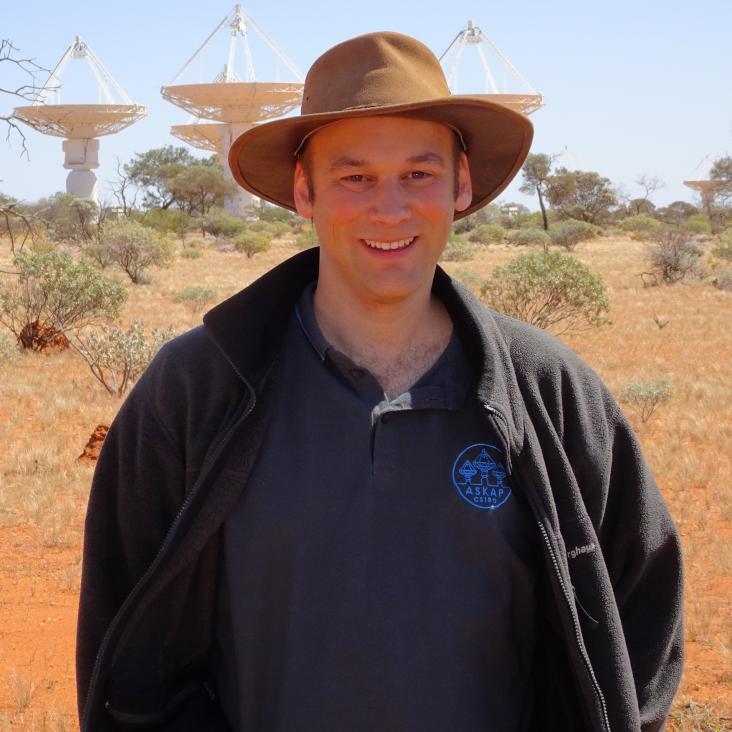Tracing X‐ray and HI absorption in peaked spectrum sources
Astronomische Nachrichten Wiley 342:9-10 (2021) 1097-1101
HI absorption at z~0.7 against the lobe of the powerful radio galaxy PKS 0409-75
ArXiv 2110.09737 (2021)
The ASKAP Variables and Slow Transients (VAST) Pilot Survey
Publications of the Astronomical Society of Australia Cambridge University Press 38 (2021) e054
Abstract:
The Variables and Slow Transients Survey (VAST) on the Australian Square Kilometre Array Pathfinder (ASKAP) is designed to detect highly variable and transient radio sources on timescales from 5 s to ~5 yr. In this paper, we present the survey description, observation strategy and initial results from the VAST Phase I Pilot Survey. This pilot survey consists of ~162 h of observations conducted at a central frequency of 888 MHz between 2019 August and 2020 August, with a typical rms sensitivity of 0.24 mJy beam-1 and angular resolution of 12 – 20 arcseconds. There are 113 fields, each of which was observed for 12 min integration time, with between 5 and 13 repeats, with cadences between 1 day and 8 months. The total area of the pilot survey footprint is 5 131 square degrees, covering six distinct regions of the sky. An initial search of two of these regions, totalling 1 646 square degrees, revealed 28 highly variable and/or transient sources. Seven of these are known pulsars, including the millisecond pulsar J2039–5617. Another seven are stars, four of which have no previously reported radio detection (SCR J0533–4257, LEHPM 2-783, UCAC3 89–412162 and 2MASS J22414436–6119311). Of the remaining 14 sources, two are active galactic nuclei, six are associated with galaxies and the other six have no multi-wavelength counterparts and are yet to be identified.The gaseous natal environments of GPS and CSS sources with ASKAP -- FLASH
ArXiv 2110.03046 (2021)
Abstract:
GPS and CSS sources are thought to represent a young and/or confined sub-population of radio-loud active galactic nuclei (AGN) that are yet to evacuate their surrounding ambient interstellar gas. By studying the gaseous environments of these objects we can gain an insight into the inter-dependent relationship between galaxies and their supermassive black holes (SMBHs). The First Large Absorption Survey in HI (FLASH) will build a census of the neutral atomic hydrogen (HI) gas in galaxies at intermediate cosmological redshifts. FLASH is expected to detect at least several hundred HI absorbers associated with GPS and CSS sources. These absorbers provide an important probe of the abundance and kinematics of line-of-sight neutral gas towards radio AGN, in some cases revealing gas associated with infalling clouds and outflows. Observations are now complete for the first phase of the FLASH Pilot Survey and early analysis has already yielded several detections, including the GPS source PKS2311$-$477. Optical imaging of this galaxy reveals an interacting system that could have supplied the neutral gas seen in absorption and triggered the radio-loud AGN. FLASH will provide a statistically significant sample with which the prevalence of such gas-rich interactions amongst compact radio galaxies can be investigated.The First Large Absorption Survey in HI (FLASH): I. Science Goals and Survey Design
ArXiv 2110.00469 (2021)


